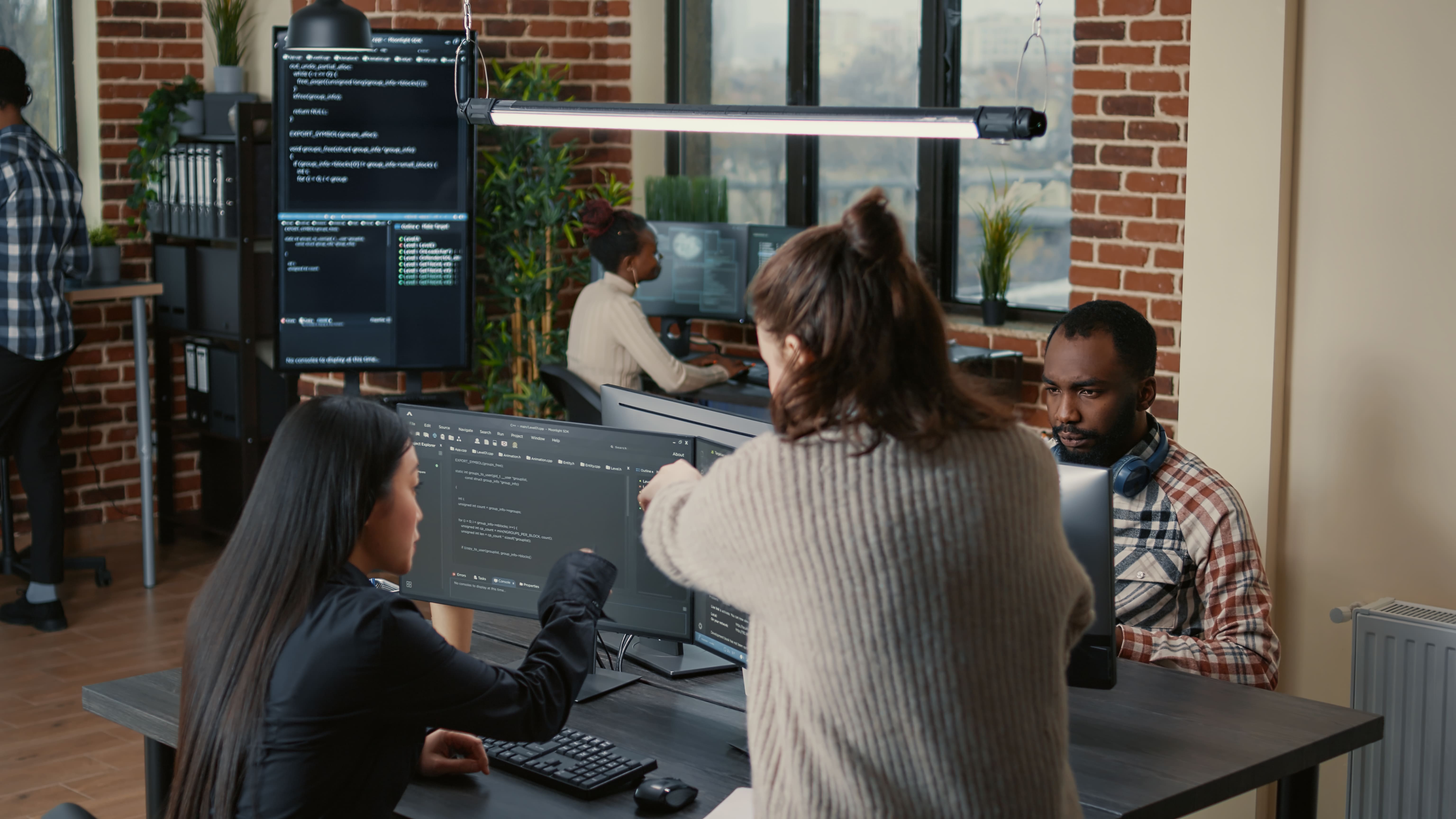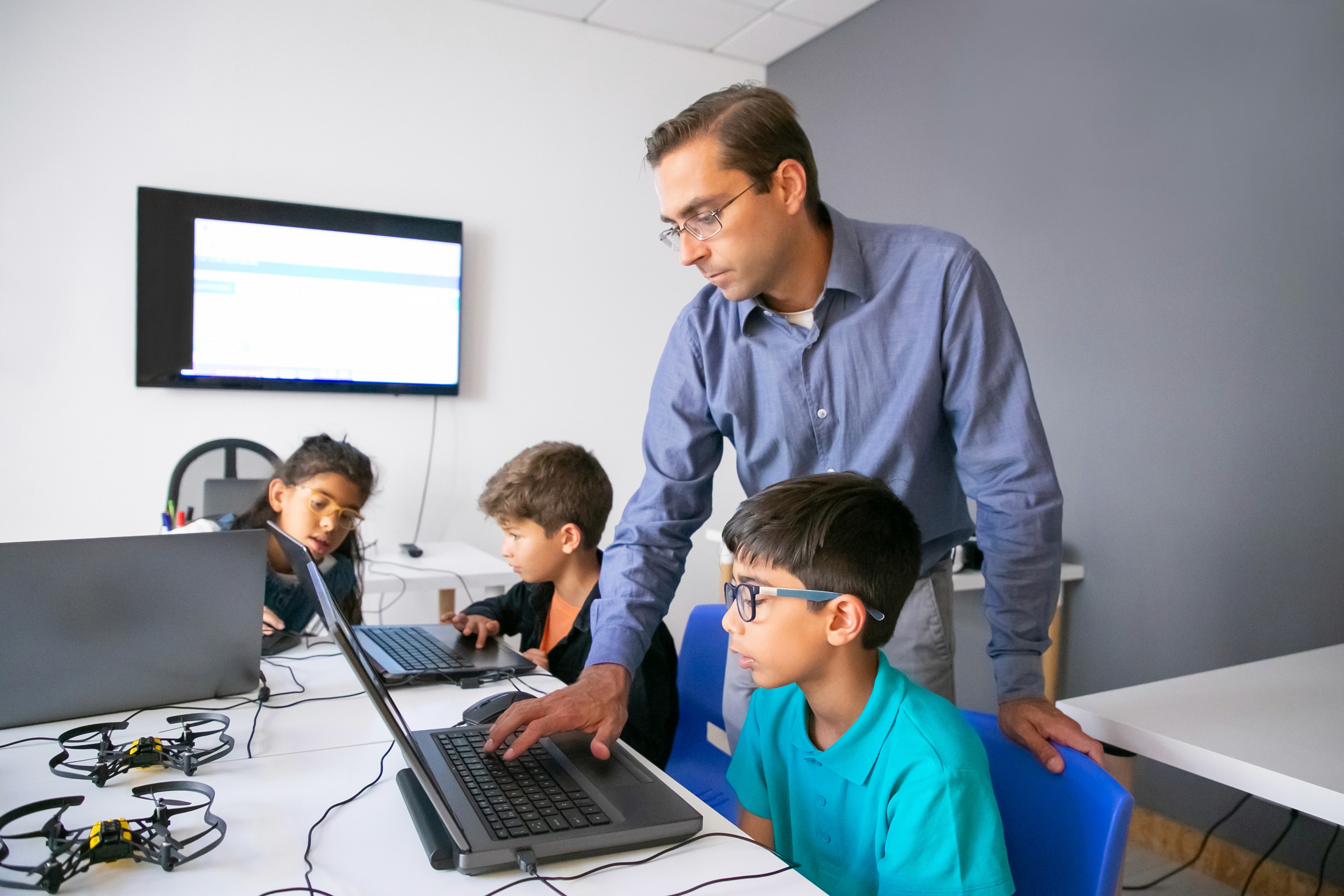
Advanced
Machine Learning
Harness the power of cutting-edge machine learning algorithms to make informed lending decisions with unprecedented accuracy.
Partnership approach
Collaborative success
We believe in the power of partnership. When you choose us, you're not just getting a vendor – you're gaining a trusted ally committed to your institution's success.
Inteligencia artificial
Con nuestro ecosistema de herramientas, nuestro equipo global de expertos puede ayudarlo a diseñar, planificar y construir su experiencia de IA.
Modelos predictivos avanzados
Automatización inteligente
Análisis de grandes datos
Inteligencia artificial
Con nuestro ecosistema de herramientas, nuestro equipo global de expertos puede ayudarlo a diseñar, planificar y construir su experiencia de IA.
Modelos predictivos avanzados
Automatización inteligente
Análisis de grandes datos
Inteligencia artificial
Con nuestro ecosistema de herramientas, nuestro equipo global de expertos puede ayudarlo a diseñar, planificar y construir su experiencia de IA.
Modelos predictivos avanzados
Automatización inteligente
Análisis de grandes datos
Inteligencia artificial
Con nuestro ecosistema de herramientas, nuestro equipo global de expertos puede ayudarlo a diseñar, planificar y construir su experiencia de IA.
Modelos predictivos avanzados
Automatización inteligente
Análisis de grandes datos
Industrias
Elija un socio con conocimiento profundo de su industria
Bancario
Educación
Marketing
Otros
Desarrollamos soluciones para entidades de alto prestigio
Contamos con la experiencia y respaldo de entidades financieras de renombre, para las cuales hemos desarrollado soluciones de alto impacto que han facilitado acelerar los procesos e innovar en áreas específicas, permitiéndoles tener un mejor control sobre sus decisiones, además mantenemos estrictos estándares de seguridad que le da a nuestros clientes la confianza para trabajar de la mano con Andheuris.





Nuestros Clientes
Nuestros resultados.
Escuche lo que nuestros clientes tienen que decir sobre nuestro equipo y nuestros servicios.
Preguntas Frecuentes
Respuestas rápidas preguntas frecuentes
¿Dónde fue fundada la empresa?
¿Cómo se asegura la calidad del software desarrollado?
¿Ofrecen mantenimiento y soporte técnico después del lanzamiento?
¿Qué metodologías de desarrollo utilizan?
¿Qué servicios de desarrollo de software ofrece su empresa?
Blog & news
Discover our latest posts
Your source for insights and inspiration in the world of lending and financial services.
The Future of Product Design: Trends to Watch in 2024
2 jul 2024

As we move through 2024, the landscape of product design is evolving rapidly, driven by technological advancements, shifting consumer expectations, and a heightened focus on sustainability. Understanding these emerging trends is essential for designers, manufacturers, and businesses aiming to stay ahead of the curve. Here’s a look at the key trends shaping the future of product design in 2024.
Emphasis on Sustainability and Circular Economy
Sustainability is no longer a niche concern but a central pillar of product design. In 2024, there is a strong emphasis on integrating sustainable practices throughout the product lifecycle. Designers are increasingly focusing on creating products with minimal environmental impact by using eco-friendly materials, reducing waste, and enhancing energy efficiency. The circular economy, which aims to extend the lifecycle of products through repair, refurbishment, and recycling, is gaining traction. Brands are exploring ways to design products that can be easily disassembled for recycling or repurposed, thereby reducing their ecological footprint and promoting resource efficiency.
Integration of Smart Technology
The integration of smart technology into products continues to accelerate. From home appliances to wearable devices, incorporating Internet of Things (IoT) capabilities allows products to offer enhanced functionality and connectivity. In 2024, we’re seeing more sophisticated applications of smart technology, such as advanced sensors, AI-driven analytics, and seamless integration with other smart devices. These innovations not only enhance user experience but also enable products to gather data and provide personalized recommendations, making them more responsive to individual needs and preferences.
Human-Centric Design
Human-centric design remains a cornerstone of product innovation. This approach focuses on designing products that meet the needs, preferences, and behaviors of users, rather than forcing users to adapt to the product. In 2024, human-centric design is evolving to incorporate more personalized and adaptive features. Products are being designed with a deep understanding of user context, including factors such as ergonomics, accessibility, and emotional connection. Designers are employing techniques like user journey mapping and behavioral analysis to create products that offer intuitive and empathetic interactions.
Minimalist and Modular Design
Minimalism continues to influence product design, emphasizing simplicity, functionality, and elegance. In 2024, this trend is complemented by modular design principles. Modular products allow users to customize and adapt their products according to their needs, promoting versatility and reducing waste. Modular design can be seen in everything from furniture systems that can be rearranged to tech gadgets with interchangeable components. This approach not only supports personal customization but also extends the product's lifecycle by allowing for upgrades and repairs.
Advanced Materials and Manufacturing Techniques
Innovations in materials science and manufacturing technologies are opening new possibilities for product design. In 2024, we are seeing the emergence of advanced materials such as bio-based plastics, smart textiles, and self-healing materials. These materials offer improved performance, sustainability, and functionality. Additionally, advancements in manufacturing techniques, such as 3D printing and additive manufacturing, are enabling the creation of complex and customized products with greater efficiency. These technologies are driving innovation by allowing designers to experiment with new forms and structures that were previously impossible or cost-prohibitive.
Focus on Health and Wellness
Health and wellness are becoming central themes in product design. Products that promote physical and mental well-being are increasingly in demand. This trend is evident in the design of ergonomic office furniture, health-monitoring wearables, and wellness-oriented home products. In 2024, there is a growing focus on designing products that contribute to a healthier lifestyle, whether through improved posture support, stress reduction features, or integration with health apps for tracking and managing well-being.
Personalization and Customization
Personalization and customization are key trends driving consumer preference in 2024. Advances in technology and data analytics enable designers to create products tailored to individual tastes and needs. Whether through customizable features, personalized recommendations, or bespoke designs, consumers are seeking products that reflect their personal style and preferences. This trend is transforming how products are designed and marketed, with a growing emphasis on offering a unique and individualized experience.
Ethical Design and Transparency
Consumers are increasingly demanding transparency and ethical practices from brands. In 2024, ethical design practices are gaining prominence as designers and companies focus on social responsibility and ethical considerations. This includes fair labor practices, responsible sourcing of materials, and transparent communication about the origins and impacts of products. Brands that prioritize ethical design and demonstrate a commitment to social and environmental values are more likely to build trust and loyalty with consumers.
Seamless Omnichannel Experiences
In an increasingly connected world, creating seamless omnichannel experiences is essential. This trend involves designing products and services that provide a consistent and integrated experience across various touchpoints, including physical stores, online platforms, and mobile apps. In 2024, we see a growing emphasis on ensuring that products and services work harmoniously across different channels, offering users a cohesive and unified experience, regardless of how they interact with the brand.
Collaborative and Co-Creation Approaches
Collaboration and co-creation are becoming integral to the product design process. In 2024, designers are engaging with users, stakeholders, and other designers to co-create and refine products. This collaborative approach helps to incorporate diverse perspectives and insights, leading to more innovative and user-centric solutions. By involving users in the design process through feedback, ideation sessions, and testing, companies can create products that better meet market needs and expectations.
Conclusion
As we look to the future of product design in 2024, several key trends are shaping the industry. Embracing sustainability, integrating smart technology, and focusing on human-centric design are crucial for creating innovative and relevant products. Additionally, advancements in materials and manufacturing, along with a heightened focus on health, personalization, and ethical practices, are driving the evolution of product design. By staying attuned to these trends and incorporating them into design strategies, businesses can create products that not only meet current demands but also anticipate future needs, leading to greater success and impact in the marketplace.


